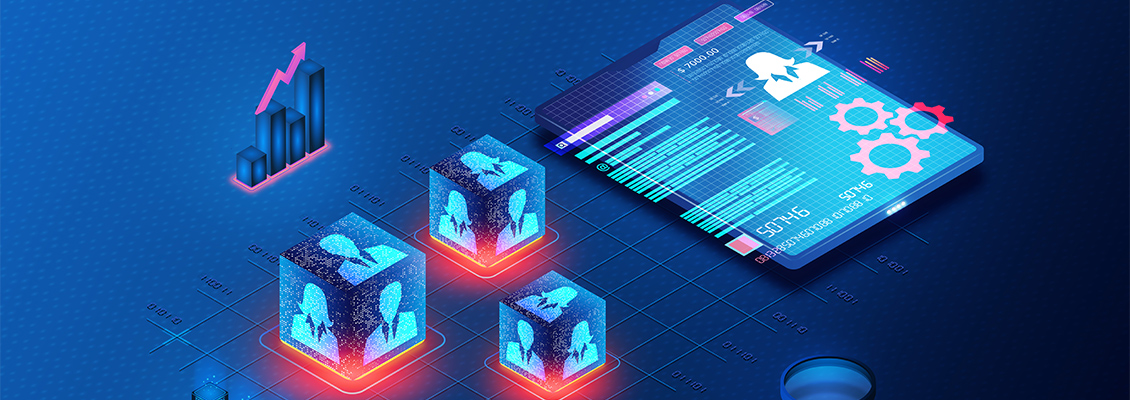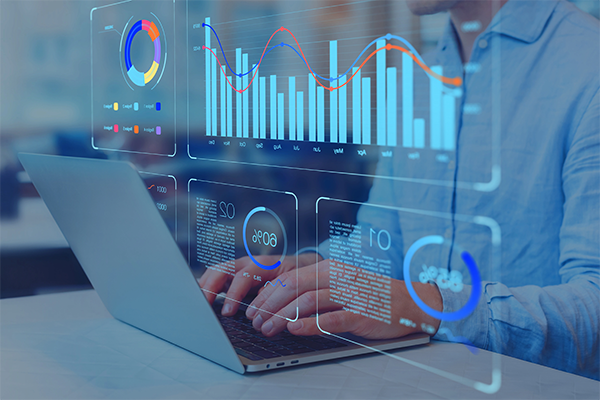06 October 2023
What is Human Resources Analytics?

Data analytics is a process used to examine raw data to identify trends and draw conclusions. In contrast, human resources analytics gathers and analyzes data to assist HR professionals in making informed decisions about the future of the workforce
Collecting and analyzing employee data is a cornerstone of strategic HR, and it is essential in today's work environment to overcome challenges in hiring and retaining top talent. There are various important subtypes of human resources analytics that differ from each other. Let's delve into them further:
1. People Analytics
People analytics, also known as talent analytics, is the process of collecting and analyzing information about an organization's workforce to improve the employee experience. This involves collecting, cleansing, and analyzing data such as demographic information, job satisfaction, turnover rates, productivity, and skill assessments. The types of information collected for people analytics include employee performance and productivity, work-life balance and well-being, as well as employee satisfaction and loyalty.
HR professionals utilize various methods for data analysis in people analytics:
- Descriptive Statistics: Descriptive statistics involve summarizing and describing data using measures such as mean, median, mode, and standard deviation.

- Inferential Statistics: Inferential statistics involve making inferences about a larger population based on a data sample. It uses statistical models to test hypotheses and make predictions about employee behavior and performance.
- Data Visualization: Data visualization involves creating graphs, charts, and other visual representations of data to help identify trends and patterns.
- Predictive Modeling: Predictive modeling involves using statistical algorithms to make predictions about future employee behavior or performance based on historical data.
- Machine Learning and Artificial Intelligence: This method involves using algorithms to identify patterns and relationships in data and make predictions based on these patterns. Our blog post delves deeper into how these approaches, such as GPT-3 technology and artificial intelligence language models, can be applied to Human Resources processes.
- Text Analytics: Text analytics involves analyzing unstructured text data, such as employee surveys or feedback, to gain insights into employee attitudes and opinions.
- Cluster Analysis: Cluster Analysis involves grouping employees based on similarities in their data. This helps to identify common patterns and make relevant recommendations.
These methods can be used alone or together, depending on the nature of the data and the problem being addressed.
2. Workforce Analytics
The practice of workforce analytics involves collecting and assessing data about a company's workforce to make informed decisions about managing and enhancing it. This may involve examining information related to employee productivity, training and development, diversity and inclusion, and various other areas. In the realm of human resources, workforce analytics can be utilized to detect trends and patterns that can aid in making more knowledgeable decisions regarding hiring, retaining staff, and their growth. Consequently, the objective of workforce analytics within HR is to boost overall workforce effectiveness and productivity, resulting in improved business processes.
3. Predictive HR Analytics
The practice of predictive HR analytics involves utilizing data and statistical modeling methods to forecast future outcomes relating to HR. This encompasses predictions about employee turnover, the success of new hires, and the probability of an employee receiving a promotion. Predictive HR analytics is a valuable tool for organizations as it empowers them to make informed decisions regarding HR issues and take proactive measures to prevent potential problems. By leveraging available data, organizations can anticipate and prevent issues, increase productivity, and optimize HR resources.
Human Resources analytics can be used to improve various HR processes, such as recruitment, performance management, training, and development. By analyzing data from successful employees, HR professionals can gain valuable insights to identify the crucial characteristics or qualifications that predict success in a specific role, thus enhancing recruitment processes. Analyzing data can also assist managers in pinpointing areas for growth and improvement in employee performance, allowing team members to achieve their full potential. Overall, incorporating data analytics in HR can help organizations make informed and data-driven decisions about their human capital.
What is the Significance of Human Resources Analytics and How Can it be Applied?

The role of HR analytics is primarily concerned with data. Although the process of HR analytics can be intricate, modern tools and software have made it more manageable, enabling HR experts to concentrate on essential aspects. Below are some of the most significant advantages of HR analytics:
- Improvement of Recruitment Practices Hiring
The right candidate(s) can be a challenging process, but human resources analytics can make it easier. By analyzing data from previous recruitment experiences, companies can gain insight to improve future interviews.
These analyses can track metrics like time-to-hire and recruitment process costs to determine how successful companies have been in hiring the "ideal" employees. Comparing the characteristics of candidates can also help identify their suitability for the company. For instance, if 2 out of 5 candidates do not align with the company culture, this information can be used to save time and focus on other potential candidates in the talent pool.
- Improvement of Employee Experience and Performance
- Reducing Attrition
- Automation of Tasks
Improving the work environment and ensuring employees have the necessary resources to perform their tasks efficiently, promoting work-life balance, and offering flexible schedules can be achieved through human resources analytics. Companies can enhance employee experience, boost productivity, and cut operating costs by examining metrics such as absenteeism rates, overtime hours, training expenses, and employee productivity. Additionally, by fostering employee engagement, contentment, and a sense of belonging, organizations can create a better work atmosphere and improve their corporate culture. HR analytics can also save time in the recruitment process, resulting in faster responses to job candidates. This means that candidates won't have to wait for weeks or months to find out if they've been hired, which will be appreciated by potential candidates in the future. As a result, businesses can improve their brand image and gain a competitive edge.
In order to combat high employee turnover rates, HR professionals can utilize HR analytics to ensure employee satisfaction. With job turnover becoming more common in today's world, and retaining employees is increasingly challenging, necessitating detailed analysis by HR professionals. By examining human resources data, companies can identify common reasons for attrition and develop appropriate solutions to reduce the number of employees leaving. By analyzing individual employee performance, employers can maintain employee satisfaction and encourage them to remain with the company. Additionally, companies can strengthen their sense of community by providing opportunities for skill development through courses, workshops, and training programs.
The use of HR analytics to automate tasks can bring great benefits to an organization. This approach saves time for HR professionals, reducing their workload and enabling them to concentrate on more strategic tasks. Automated tasks are more reliable than manual processes, thus improving the accuracy and consistency of HR processes. Furthermore, HR teams can gain valuable insights and data-driven decision-making, enabling them to spot trends and areas for improvement within the organization. Overall, by automating tasks with HR analytics, the HR function becomes more efficient and effective, benefiting the HR team and the organization as a whole.
In conclusion, human resources analytics plays a key role in organizations as it empowers them to make decisions based on data regarding their employees. Through the collection and analysis of data on various HR metrics like employee performance and turnover, organizations can identify trends and issues within their company and take appropriate measures to increase productivity and efficiency. Moreover, HR analytics can help companies to understand their employees' needs better, enhancing their satisfaction and creating a sense of belonging in the workplace. By utilizing the insights gained from HR analytics, organizations can establish a more efficient and thriving workforce.
Should you have any queries or need further details, please contact us.
Notification!






